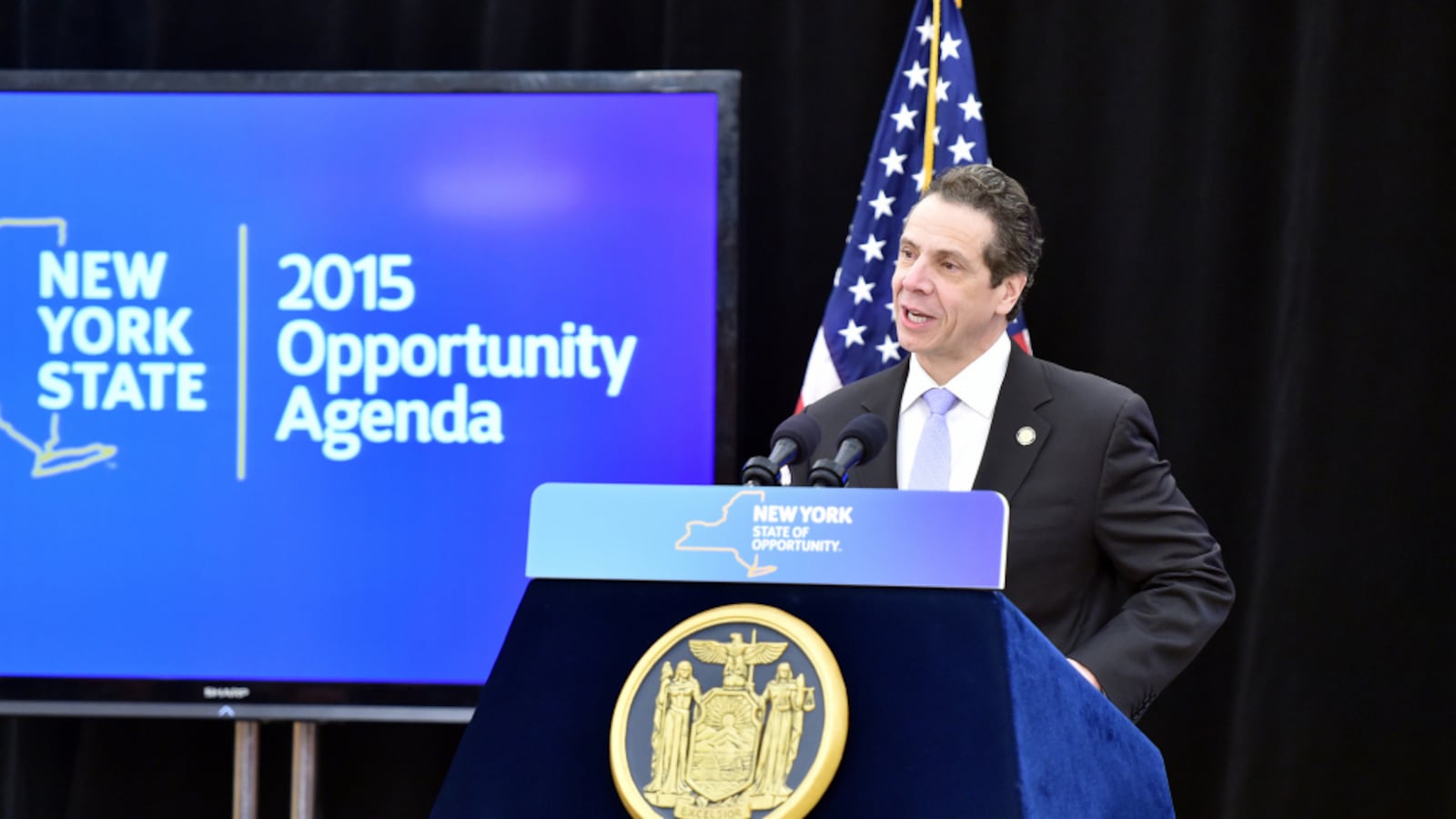Among the dozens of struggling city schools facing the threat of takeover by outside groups are about 20 troubled schools that are not part of the city’s new turnaround program, according to a Chalkbeat analysis of “failing” schools identified by Gov. Andrew Cuomo’s office.
More than 70 city schools fall on the governor’s list of schools that could be put under the control of outside “receivers” if they fail to make major improvements in two years or less, under the state budget passed this month. Most of the schools will get extra help through the city’s new “Renewal” initiative, but 19 schools at risk of takeover are not part of that support program, according to Chalkbeat’s analysis.
The governor’s list is based on criteria similar to what is in the law. However, state education department officials cautioned that the law gives the agency’s commissioner some leeway when writing the regulations that will identify takeover schools. Because the agency is still developing those regulations based on the new law, it does not have a final list of those schools, the officials said.
Still, Cuomo’s preliminary list of potential takeover schools puts the city in an uncomfortable position. Mayor Bill de Blasio had argued that Cuomo’s plan was unnecessary because the city has its own aggressive turnaround program, but now it is clear that a number of the troubled schools on Cuomo’s list are not in that program.
A city education department spokeswoman said that every school — whether or not they are in the Renewal program — will get help from the newly empowered superintendents and the coming school-support centers, which are set to open this summer. Schools will get guidance around special-needs students, curriculum, teacher training, and more, said spokeswoman Devora Kaye.
The superintendents and support-center teams will work together, Kaye said, “to recognize a school’s strengths and diagnose a school’s weakness more expeditiously and set a better course of action to drive student achievement.”
The law divides the state’s lowest-performing schools into “failing” schools that have been bottom-ranked for three years, and “persistently failing” schools that have floundered for at least a decade. The “failing” schools have two years to make gains and the “persistently failing” schools have just one year before they could be put under the control of a receiver — a nonprofit, school district, or individual selected by the city schools chief.
The city has eight of those long-struggling schools, and 65 of the more recently troubled schools (excluding schools that are in the process of closing), according to the governor’s list. All of the eight schools are in the city’s Renewal program, but 19 of the remaining schools are not, according to Chalkbeat’s analysis.
The city used the state’s accountability measures to identify low-performing schools for its turnaround program, but also added other criteria, which is why some schools that are not in the Renewal program could still face receivership.
One of those schools is Community Health Academy of the Heights, a combined middle and high school in Washington Heights.
The school, which is on the state’s “failing” list, has a smaller share of students who passed annual exams or graduated in four years than the city average. At the same time, it significantly boosted the share of students who passed last year’s exams and its six-year graduation rate exceeds the city average — perhaps reasons why the school is not in the city’s Renewal program.
“On some things, we need to do a lot of work. On some things, we’re doing really well,” said Principal Mark House, noting that the school has also made strides in non-academic areas, such as parent-survey results and student participation in after-school programs. “It really depends on who’s doing the measurement.”
Potential takeover schools must enact improvement plans that include measures of progress such as test scores and attendance, suspension, and graduation rates, according to the law. If the schools do not make “demonstrable improvement” on those metrics, then the city must appoint receivers to take over.
The receivers have broad authority: they can modify a school’s budget or curriculum, increase salaries, or turn district schools into charters, and they must bring in more social and health services, the law says. They can also fire principals and force teachers to reapply for their jobs. However, if they want to change parts of the school covered by the teachers contract — such as the length of the day or year, or class size — they must negotiate with the teachers union.
City schools Chancellor Carmen Fariña, like other district chiefs, will have the same powers over those schools as a receiver during the one-to-two years she has to revamp them. The budget law also includes $75 million for the “persistently failing” schools, or about $2.8 million per school.
Principals union President Ernest Logan said he was confident the city will keep the schools from reaching the point of receivership. Still, he said just the threat of takeover may make it hard for the schools to keep or attract skilled teachers and principals.
“You have to have a second thought about, ‘Should I go in and take over this school if I only have two years to turn this around?’” he said. “There’s no incentive to go there.”
The following chart lists low-performing schools identified by the governor’s office, and notes which are part of the city’s Renewal program and which are being phased out:

